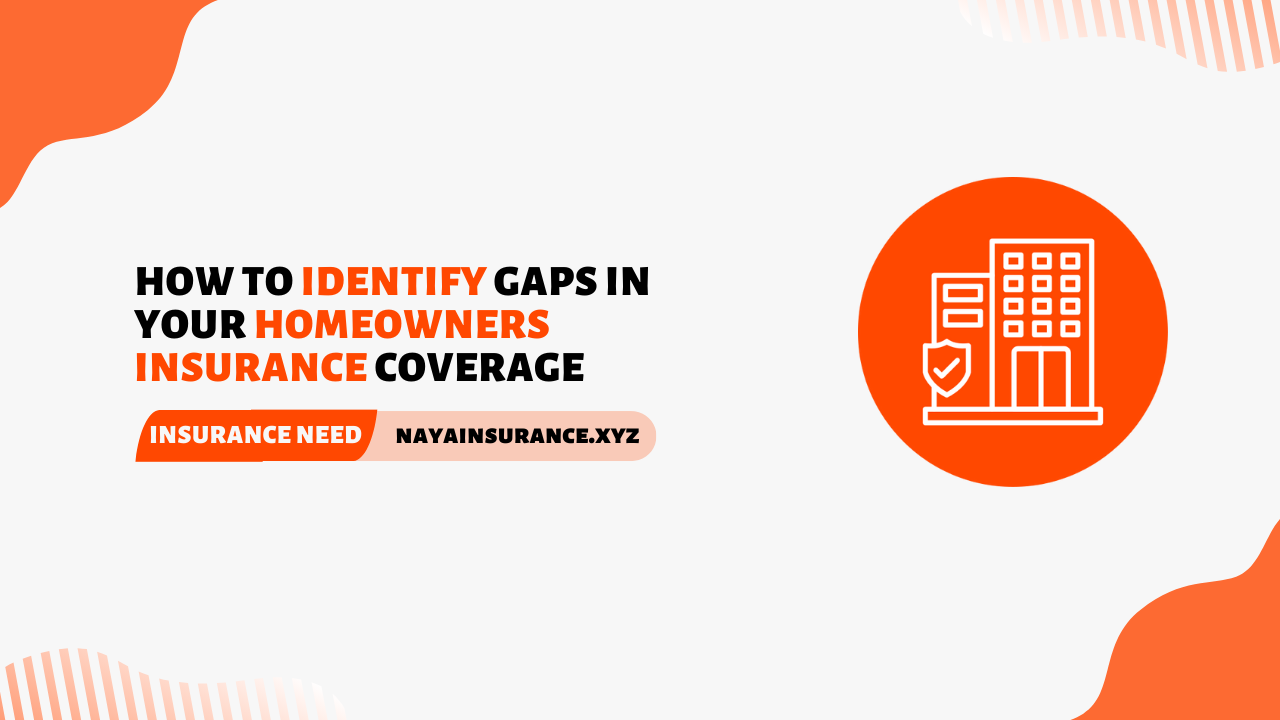Homeowners insurance is a crucial safeguard for your home and belongings. However, many homeowners are unaware of potential gaps in their coverage that could leave them vulnerable in the event of a disaster. Identifying these gaps is essential to ensure you have adequate protection.
In this article, we’ll explore how to identify and address gaps in your homeowners insurance coverage.
Understanding Homeowners Insurance
Homeowners insurance is a type of property insurance that covers damages to your home and personal property. It typically includes coverage for the structure of your home, personal belongings, liability protection, and additional living expenses if you need to temporarily relocate due to a covered loss.
Common Gaps in Homeowners Insurance
Despite the comprehensive nature of homeowners insurance, there are several common gaps that homeowners should be aware of:
- Natural Disasters: Standard homeowners insurance policies often exclude coverage for certain natural disasters, such as floods and earthquakes. These events require separate policies or endorsements.
- Floods and Earthquakes: Floods and earthquakes are not typically covered under standard homeowners insurance policies. Homeowners in flood-prone or earthquake-prone areas should consider purchasing separate policies or adding endorsements to their existing policy.
- Sewer Backups: Damage caused by sewer backups is often excluded from standard homeowners insurance policies. Homeowners may need to purchase additional coverage or endorsements to protect against this risk.
- Personal Property Limits: Homeowners insurance policies usually have limits on the amount of coverage for personal property. It’s important to assess the value of your belongings and ensure that your coverage limits are sufficient.
- Liability Coverage: Liability coverage protects you if someone is injured on your property or if you cause damage to someone else’s property. It’s important to review your liability limits and consider increasing them if necessary.
How to Identify Gaps in Your Coverage
Identifying gaps in your homeowners insurance coverage involves a few key steps:
- Review Your Policy Documents: Take the time to carefully read through your policy documents. Look for any exclusions or limitations that could leave you unprotected.
- Understand Policy Exclusions: Familiarize yourself with the exclusions listed in your policy. These are the events or circumstances that are not covered by your insurance.
- Assess Your Home’s Value: Consider the current value of your home and its contents. Ensure that your coverage limits are adequate to cover the full replacement cost of your property.
- Consider Additional Coverage Options: Evaluate whether you need additional coverage options, such as endorsements or riders, to fill any gaps in your existing policy.
Steps to Fill the Gaps
Once you’ve identified gaps in your coverage, there are several steps you can take to address them:
- Adding Endorsements or Riders: Endorsements or riders are additional provisions that can be added to your existing policy to provide coverage for specific risks, such as floods or earthquakes.
- Purchasing Separate Policies: For certain risks, such as floods or earthquakes, you may need to purchase separate policies to ensure you have adequate coverage.
- Increasing Coverage Limits: If your current coverage limits are insufficient, consider increasing them to better protect your home and belongings.
Consulting with an Insurance Agent
Consulting with an insurance agent can provide valuable insights and help you make informed decisions about your coverage. Your agent can review your policy, identify any gaps, and recommend solutions to address them.
Regular Policy Reviews
It’s important to conduct regular reviews of your homeowners insurance policy to ensure it remains up-to-date and adequate. Changes in your home’s value, personal property, or living situation may necessitate adjustments to your coverage.
Case Studies
To illustrate the importance of identifying and addressing gaps in homeowners insurance coverage, let’s look at a few case studies:
- Case Study 1: Jane and John recently purchased a home in a flood-prone area. They assumed their standard homeowners insurance policy would cover flood damage, but they discovered it did not. After consulting with their insurance agent, they purchased a separate flood insurance policy to fill this gap.
- Case Study 2: Sarah experienced a sewer backup that caused significant damage to her home. She was surprised to learn that her homeowners insurance policy did not cover this type of damage. Sarah added a sewer backup endorsement to her policy to ensure she would be protected in the future.
Conclusion
Identifying gaps in your homeowners insurance coverage is essential to ensure you have adequate protection for your home and belongings. By reviewing your policy documents, understanding exclusions, and consulting with an insurance agent, you can take proactive steps

